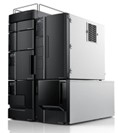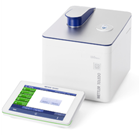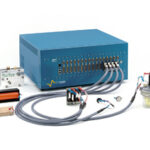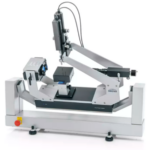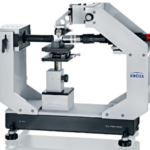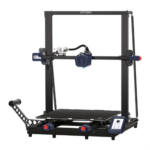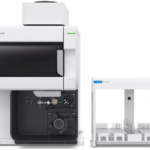Wet labs and Analytical lab
I-FIM houses multiple wet labs and an analytical lab dedicated to studying chemistry of polymer, membrane and composite samples, and harvest their potential as dynamically adaptive intelligent materials. In particular, strong emphasis is being given on synthesizing and functionalizing heterostructured intelligent membranes, such that that the selectivity and the permeability of such membranes can be controlled by externally stimuli such as temperature, pH, light and magnetic field. Material synthesis usually follow the standard recipes of filtration, distillation, sonication, centrifugation etc and are carried out in the multitude of fumehoods located in these labs. 3D and 2D printing technology to produce samples with specific shape, structure and dimension using resin composites from our newly discovered materials is also being pursued actively. The key to realizing the potential of our synthesized materials as Functional Intelligent Material’s (FIM) is to study their interaction with the environment. The wet labs and the analytical lab in I-FIM have been equipped with a variety of specialized tools to aid this investigation.
Most of the equipment in the following table are open to non-IFIM users, subject to the booking and charging policy. Please contact Dr. Musen Chen (ms_c@nus.edu.sg) and Dr. Sourav Mitra (sourav_m@nus.edu.sg) for inquiries on equipment usage or sample submission.
| List No. |
|
Picture |
|
A. |
High-Performance Liquid Chromatography-Mass Spectrometry (HPLC-MS)
To separate, identify, and quantify compounds in a mixture.
|
|
|
B. |
UV-Vis-NIR Spectrophotometer
To measure absorbance or transmittance of liquid or solid sample in comparison to a reference or blank sample, or to quantify concentration. 1. UV-3600iPlus
2. UV5 Nano
|
|
|
C. |
Fourier-transform Infrared Spectroscopy (FTIR)
To measure IR spectrum for characterization of chemical properties.
Attenuated Total Reflectance (QATR 10, diamond crystal) for direct measurement of liquid, film, and powder samples. |
|
| D. | Fluorescence Spectrophotometer
To include both steady-state and time-resolved dual capabilities.
|
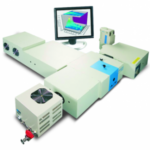 |
|
E. |
DYNAMIC MECHANICAL ANALYZER (DMA)
To measure the viscoelastic properties of soft samples (in air as well in liquid media) under controlled environmental conditions of temperature, pH and relative humidity (RH)
|
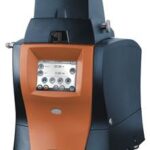 |
|
F. |
Quartz Crystal Microbalance with Dissipation monitoring (QCM-D) with an ellipsometer
To measure mass with a sensitivity of ~ng/cm2, monitor energy change, and distinguish between structural changes caused by solvent uptake/release. Integrated with an electrochemistry module and potentiostat to allow for simultaneous QCM-D electrochemistry or QCM-D/Electrochemical Impedance Spectroscopy (EIS) measurements
|
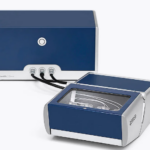 |
|
G. |
Bipotentiostat
A state of the art bipotentiostat with a broad current and voltage measurement range
|
|
|
H. |
Scanning Probe System (VersaSCAN)
A multifunctional compact scanning system equipped with a Scanning Electrochemical Microscopy (SECM), a Scanning Vibrating System (SVET), a LEIS (Localised Electrochemical Impedance Spectroscope) and a Scanning Kelvin Probe (SKP) SECM
SVET
LEIS
SKP
Potentiostat (x2)
|
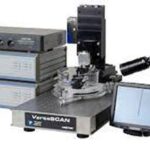 |
|
I. |
SurPASS 3 SURFACE ZETA POTENTIAL
Measurement of the zeta potential down to a few millivolt at the solid/liquid interface by means of streaming potential and streaming current measurement.
|
 |
|
J. |
Membrane permeation Setup
A high throughput home-designed setup for automated measurement of membrane permeability to different gaseous mixtures
|
|
|
K. |
Reverse Osmosis Setup
To study reverse osmosis (RO) in membranes using feedwater with variable pH and conductance. Can be applied to investigate potential smart membranes for water purification and ion extraction applications
|
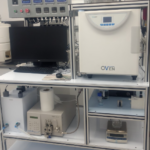 |
|
L |
Drop Shape Analyzer (DSA)
To measure contact angle, surface free energy, and surface/interfacial tension of solid surfaces and liquids. Methods: sessile drop, double sessile drop, pendent drop, etc. 1. DSA25E
2. DSA30M
|
|
|
M |
Zetasizer
To measure particle/molecule size, zeta potential, molecular weight, concentration (for size < 500 nm) and quantify colloidal stability, by light scattering methods.
|
|
|
N |
3D Printer
To construct 3D object from CAD or digital 3D models.
2. Kobra Max – Fused deposition modeling (FDM)
|
|
|
O |
Inductively Coupled Plasma - Optical Emission Spectrometry (ICP-OES)
For semi-quantitative elemental screening and quantitative concentration analysis.
|
|

